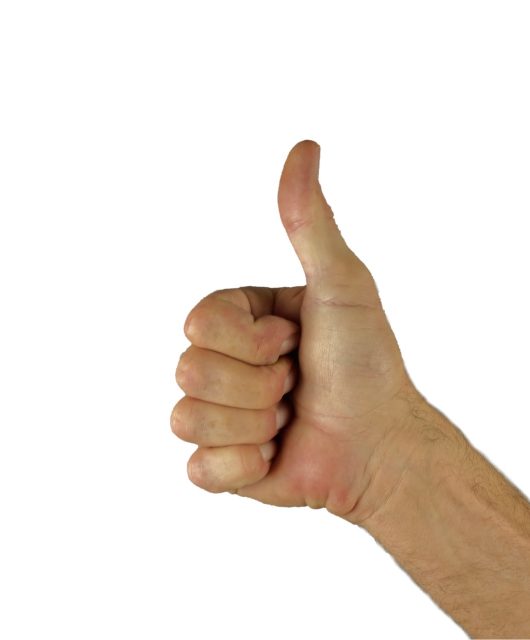Sound Systems for DJs via DJ TechTools
Mymp3pool caters to all DJs here on the site, so we want to make sure to make a variety of post for not only the club DJ but for the mobile DJ as well. A lot of us may have got our start being a mobile DJ and then transitioned to the club. Whatever type of DJ you are the most important thing is that you are a DJ and just keep spinnin’ them records. As mobile DJs, we deal with the whole aspect of the party, from sound to lighting the mobile DJ puts in work. This post is for you.
Mobile DJing is an avenue that takes the meaning of gear to a whole new level. Gear doesn’t just mean a DJs controller and mixer. The term encompasses controllers, laptops, microphones, stage lights, dollies, and much more. One of the most important set of components for any mobile DJ is to have a good pair of loudspeakers. A mobile DJ will typically be an all-inclusive package so a sound system is definitely needed and it is important to understand what to look for in a sound system. DJs will have either passive or active speakers and knowing the difference between the two is a skill every mobile DJ should have. Today we will break down each type and provide the knowledge to determine where each type excels.
Passive vs. Active Speakers
The first concept to understand is that not all speakers are the same. Car speakers aren’t studio monitors and studio monitors aren’t loud speakers. Mobile DJs in particular could be doing events with less than 100 people to over 1000 people and it is important to understand how sound is processed by loud speakers in order to accommodate the audience size. While there are major differences between passive and active speakers there are a few things to understand first.
Watts and Speakers
DJs have probably heard the term watts from their electric company before because watts are a simple way to measure power. The power of a speaker is what pushes the volume of an audio signal. The higher the watts doesn’t necessarily mean the louder the sound though. That can be determined through frequency responses and other audio statistics. This is an important concept to understand because as a mobile DJ it is easy to say that a 500 watt speakers is better than a 350 watt speaker when in reality it is not that simple. However, understand the watts of the speakers because this will help determine how to buy the rest other pieces of the mobile DJ setup (learn more about being a mobile DJ).
RMS Power vs. Peak Power
Anyone who has shopped for PA speakers before probably have noticed that, in a pair, each one pushes a certain amount of watts. Most advertise pusing a lot of watts and for the price that sounds amazing, right? Well don’t judge a speaker by its box. Most manufacturers will advertise the peak power which is not the actual power a speaker can handle. The peak power is what the system can handle when it comes to spikes in audio but is not the recommended power for a continuous stream of audio. The number to find on the box is RMS which is a rating for a measure of continuous power. This concerns passive speakers mostly but it is important to understand regardless because dealing with power can be risky business if a fuse is blown or, worse, a speaker is fried.
Passive Speakers
Passive speakers are sometimes seen as old school systems and not as of high quality as active speakers. The fact of the matter is that passive speakers can be just as powerful as active speakers and it all depends on which ones a DJ chooses to invest into. Now, the main difference in passive speakers is that they require an amplifier in order to hear sound. So essentially sound would travel like so:
Controller to Mixer to Amplifier to Speakers to Audience
Therefore, a DJ will need to buy one amplifier for every pair of passive speakers. While an extra piece of equipment is needed to get up and running, usually passive speakers run cheaper than active speakers so there isn’t much of a cost difference. IMPORTANT NOTE: Power is running through each audio connection so never connect a chain of speakers to one amp. More than two speakers to an amp may (most likely will) blow a fuse in the amplifier or fry it completely. Don’t learn the hard way, during a gig, like I have.
As I said earlier, a DJ needs to pay attention to the watts because those ratings will determine which amplifier matches the speakers that are being used. If a DJ rocks a speaker that runs at 300 watts RMS and the DJ purchases 2000 watt amplifier, that will be overkill. The DJ will barely turn the sound up before noticing some clipping and distortion coming out of the speakers. Also, an amplifier that advertises 1000 watts isn’t sending out 1000 watts to each speaker. The construction of the amplifier and the type of signal being sent out (stereo/mono) will determine how many watts are sent to each speaker. Check the specs of an amplifier and match that to the RMS ratings of the speakers. Look at the specs for the Crown XLS 1000 Power amplifier:
Stereo, 2 ohms: 550W
Stereo, 4 ohms: 350W
Stereo, 8 ohms: 215W
Bridged Mono, 4 ohms: 1100W
Bridged Mono, 8 ohms: 700W
Note that bridged mono watts are the total amount of watts being sent to the whole system, not each speaker. Given the information above a DJ should use this amplifier with speakers running 350W RMS at 8 ohms. Now, ohms stand for a unit of electrical resistance. In terms of a decent PA, shoot for running 4 ohms with each speaker.
Bottom Line: Passive speakers are great for affordable sound. There will be an added component of buying an amplifier but the price of two speakers and amplifier is comparable to two powered speakers. The quality of sound not only depends on the speaker construction but also the amplifier. Watch out for bad knock off speakers and amplifiers.
Active Speakers
Active speakers are powered which means DJs need not worry about having an amplifier. The volume is controlled on each speaker and each speaker connects directly into the mixer. Powered speakers are really an all in one solution.
The wattage rating on a powered speaker is the power of the internal amplifier. Usually a couple of 500 watt powered JBLs could get me through 400 dancing teens at a homecoming dance. Powered speakers are great because each speaker’s volume is controlled separately from each other and the DJ doesn’t have to watch their amp all night. When DJing with powered speakers I usually set their individual volumes during sound check and then watch the volume on the mixer (you still need to trust the levels on the mixer).
A cool feature of powered speakers is that they are usually linkable. Unlike passive speakers where each audio input has power pulsing through the connection, powered speaker inputs are just feeding the audio. Each speaker will usually have an “IN” for the source of the audio and an “OUT” to connect to another speaker. This is great because most mixers have only two master out connections (learn more about connecting your speakers).
Bottom Line: Powered speakers are the all in one solution. A mixer, XLR cables, and the speaker is all you need. Keep in mind you will need more outlets to connect the speakers and powered speakers are generally more expensive since each speaker contains its own amplifier.
Things to Consider
Buying speakers, especially as a mobile DJ, can be a tricky task. There are so many different choices to choose from even if a DJ narrows their choices down to active or passive speakers. The thing to remember when buying speakers is how big the gigs usually are.
For example, I did small birthday parties (>70 people) to school dances (500+ people). Therefore, I pieced together a passive system that amounted to 1200 watts of sound. Since I played in gymnasiums for dances, I didn’t need a lot of sound because the reverb in the room helped me out. Also, for smaller parties I could get away with one amp and two speakers. Now, if asked for bigger gigs, I would kindly refuse because I would have to rent more equipment and figure out how to haul the extra gear. I understood my limits as a mobile DJ and it is important to understand those limits when buying gear.
Whether a DJ chooses passive or active speakers doesn’t really matter. What matters is understanding the audience that will hear the music and finding the system that suits the DJs needs. Be wary of cheap “no-name” brands that offer more sound for less money. Those speakers are usually faulty in one way or another and a DJ is better off saving money to go with a trusted brand. (JBL, Berhinger, Seismic Audio, etc.) A good pair of speakers can go a long way and this guide hopefully can help DJs of different calibers move throughout the sound system market.
After reading all this, what speakers do you prefer? What speakers have you used in the past and what are you currently using?

















2 comments
I’m using: mbproretina15>ddj-sz>dbx driverack px> a pair of behringer neo 15’s and behringer 18″subs.
Going to get a pair of QSC k12’s next month. The neo’s are too heavy and better for large parties.
Valuable information you bought here! I would like to many thanks for sharing your thoughts into the things you post!!